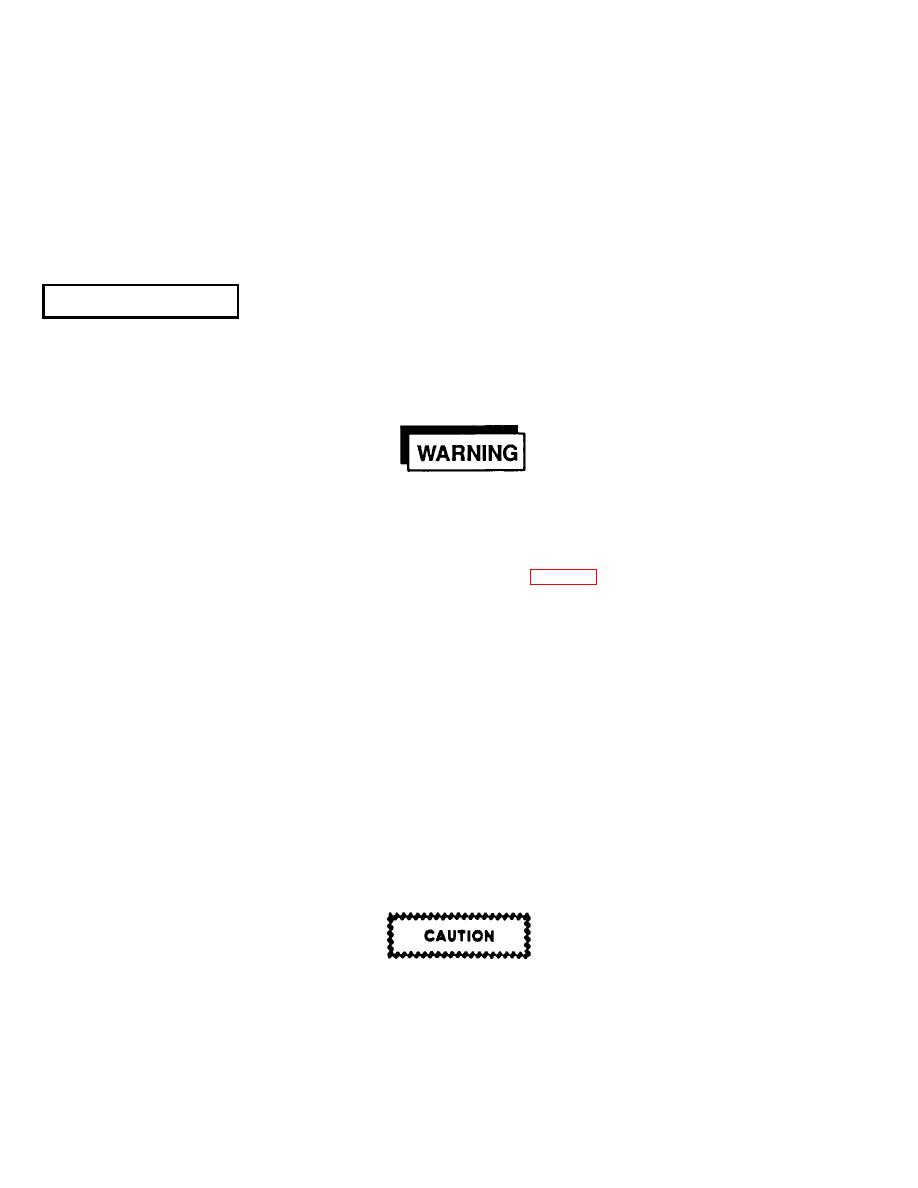 |
|||
|
|
|||
|
|
|||
| ||||||||||
|
|
 TM5-4110-234-14
TO 40R7-5-7-1
g. The system refrigerant charge is now contained in the receiver tank. Close the receiver inlet valve and the
compressor service valves.
h. Reset the thermostat and if a jumper was added, (step c above) it should be removed.
i.
If the unit is to remain in a pumped down condition for storage or shipment, a tag should be placed on the
control panel with a statement similar to the following.
THIS UNIT HAS BEEN PUMPED DOWN. Prior to operation open both receiver valves, the defrost hand
valve and backseat and crack the compressor suction and discharge service valves.
5-7.
LEAK TESTING
If a refrigerant leak is suspected or repairs have been made the refrigeration system or repaired section should be tested
using one of the following methods.
a.
Access.
Always disconnect power from battery (F1OOOORG-2) or power source (F10000R-6) prior to performing
internal maintenance. The unit could be turned on while you are working inside.
(1)
Open all condenser section access doors.
(2)
Remove the evaporator air housing and screen. (See fig. 4-12).
b.
Testing Method. There are two acceptable methods for leak testing the refrigeration system.
(1) Refrigerant Gas Leak Detector. If an electronic refrigerant gas leak detector is available it should be used in
accordance with the procedures contained in TM 94940435-14, "Leak Detector, Refrigerant Gas."
NOTE
The electronic refrigerant gas tester is highly sensitive to the presence of a minute quantity of gas in the
air, and due to this factor is quite effective in the detection of small leaks. However, due to the rapid
dispersion of refrigerant gas into the surrounding air, difficulty may be encountered in pinpointing large
leaks. The detector must be used in a well ventilated but draft-free area.
(2) Soap Solutions. In this method, a strong solution of a liquid detergent and water is brushed onto all
points of leakage while closely observing for the formation of bubbles.
If the soap solution testing method is used, thoroughly rinse with fresh water after testing is completed. A
residual soap film will attract and accumulate an excessive amount of dust and dirt during operation.
c. Testing Procedures. To perform leak testing by use of the electronic detector, it is necessary that the
system be pressurized with a proportion of refrigerant gas. To perform leak testing by use of the soap solution method,
the system may be pressurized with refrigerant gas or dry nitrogen.
5-5
|
|
Privacy Statement - Press Release - Copyright Information. - Contact Us |